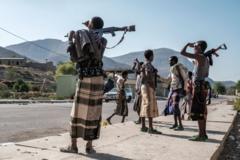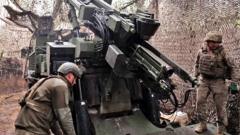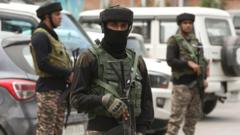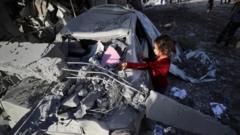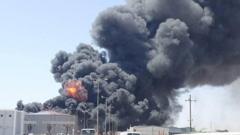The Line of Control, separating India and Pakistan, is once again a hotspot of violence, bringing with it the everyday hardships faced by the local populations as tensions over ceasefire violations and political disputes resurface.**
Tensions Rise Along the Line of Control: A Perpetual Struggle for Peace Between India and Pakistan**
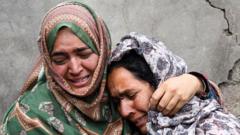
Tensions Rise Along the Line of Control: A Perpetual Struggle for Peace Between India and Pakistan**
The volatile LoC remains a flashpoint as renewed hostilities escalate between India and Pakistan, leaving civilians caught in the crossfire.**
To live near the Line of Control (LoC)—the fraught de facto border separating India and Pakistan—is to exist in a constant state of risk as fragile peace teeters on the brink of war. Following the recent attack in Pahalgam, hostilities surged again, resulting in shelling that devastated communities on either side of the border. While India reports at least 16 fatalities, Pakistan claims 40 civilians have died, although the exact toll from the crossfire remains uncertain.
Residents along the LoC are caught in the middle of the ongoing tensions of both nations, losing their homes and livelihoods to military actions. Anam Zakaria, a Pakistani author, asserts that families must continually seek refuge in bunkers and face the destruction of their infrastructure, including vital services like healthcare and education. The LoC stretches 740 km (460 miles) as part of a 3,323 km (2,064 miles) border shared by the two nuclear-armed states. Originally established as the Ceasefire Line following the 1949 war, the LoC was renamed by the 1972 Simla Agreement. This area, deeply militarized, has witnessed numerous conflicts over the years, with ceasefire agreements proving to be fragile at best.
Experts have likened the LoC to a "border drawn in blood," emphasizing that it reflects the deep-rooted conflict primarily affecting the Kashmiri people, whose perspectives are often sidelined. Notably, moments of low-intensity conflict can escalate rapidly, as evidenced after the last ceasefire in place since February 2021, which had temporarily quelled violence but ended abruptly with recent tensions.
The harrowing history of violence remains, with reports of thousands displaced by the hostilities over the years, showcasing the dire consequences of sporadic escalations. The Indian side recently halted the Indus Waters Treaty in response to the Pahalgam incident, while Pakistan hinted at withdrawing from the Simla Agreement, although no formal step has been taken yet.
According to experts, ceasefire violations often occur not from overarching policy decisions but due to locally driven military actions. This has led to an alarming use of advanced weaponry by both countries, provoking further international scrutiny over the situation, particularly regarding civilian casualties. There are calls for reevaluating the idea of recognizing the LoC as an official border, but opinions decidedly clash on the feasibility of such proposals.
Sumantra Bose, a political scientist, believes efforts to redefine the status of the LoC will remain impractical until broader settlements address Kashmir's contentious status, a goal that has muddled negotiations for decades. The renewed cycle of violence heightens uncertainty for residents near the border, who fear for their safety amid ongoing conflict. “You never know what will happen next. No one wants to sleep facing the Line of Control tonight,” a local hotel employee poignantly remarked, underscoring the pressing danger faced by communities situated alongside one of the world's most hazardous borders.


